10 Foods for Stronger Nails and Thicker Hair
http://time.com/3481714/10-foods-stronger-nails-thicker-hair/

Plush Studios—Getty Images/Blend Images
Looking good is just as much about taking care of your body on the inside as it is about using products on the outside. And we’re not just talking about your skin: “A nutritious diet promotes healthy nails and hair, too,” says Joshua Zeichner, MD, director of cosmetic and clinical research in the department of dermatology at Mount Sinai Hospital in New York City. But there’s no need to add a refrigerator’s worth of new foods to your diet. “Since both hair and nails are made of keratin, through a similar process in the body, it’s thought that nutrients that help one can also help the other,” says Dr. Zeichner. Ready to say bye-bye to brittleness? Read on for foods that give your hair and nails a boost.
Whey protein
“Your hair needs protein to produce keratin, the proteins that make hair strong,” says Dr. Zeichner. “If hair doesn’t receive enough protein, it can go into a ‘resting phase,’ causing noticeable hair loss,” adds Beth Warren, author of Living a Real Life with Real Food. Try adding a scoop of whey protein to your morning smoothie for simple boost. (Bonus: Whey protein may help control your appetite. In one study, people who drank whey protein ate 18% less two hours later than those who drank a carb-heavy beverage.)
Red meat
A juicy steak is loaded with protein, and it also has another nutrient that’s important for hair and nail health: iron. “People with iron-deficiency anemia often have thin hair,” says Dr. Zeichner. And according the American Family Physician, iron-deficiency is associated with koilonychia—a nail disease characterized by spoon-shaped nails. That doesn’t mean you should eat red meat every day of the week. Red meat is high in saturated fat, and eating a lot of it has been associated with an increased risk of several health problems including heart disease, several types of cancer, and type 2 diabetes. But you can safely indulge in a lean cut of beef once a week. If you think you may be deficient in iron, talk to your doctor about starting a supplement.
Blueberries
“Antioxidants help protect your body’s cells against free radical damage,” says Erin Palinski, RD, author of Belly Fat Diet For Dummies. “This damage increases stress hormones and inflammation, which impacts all cells in the body, including those in the hair and nails.” Among other fruits and dark greens, Palinski calls out blueberries: “They have one of the highest antioxidant properties of all fruits,” she says.
Almonds
Not only are almonds a good source of protein, they’re loaded with magnesium, which helps maintain healthy hair and nails. “Magnesium is Mother Nature’s anti-stress mineral, and stress is a major factor in hair loss,” explains Ashley Koff, RD. “Vertical ridges in your nails may be a sign of inadequate magnesium,” adds Palinski. You can also get more magnesium through leafy greens, cacao nibs, and soybeans.
Beer
Beer is one of the richest sources of silicon in the average diet, says research from the Journal of the Science of Food and Agriculture. “Silicon is a trace mineral thought to increase circulation to the scalp, which is good news for hair growth,” says Rebecca Kazin, MD, dermatologist at the Washington Institute of Dermatologic Laser Surgery and the Johns Hopkins Department of Dermatology. That explains why a daily 10-milligram silicon supplement was shown to reduce hair and nail brittleness after 20 weeks, according to theArchives of Dermatological Research. No need to go overboard, though: Most single servings of beer contain more than 10 milligrams of silicon. Experts recommend that having no more than one drink a day if you’re a woman, and two if you’re a man.
Oysters
“Zinc is needed for many biological processes, including making proteins like those in your hair and nails,” explains Dr. Zeichner. Oysters have 74 grams of zinc per serving, far more than any other food, says the National Institutes of Health. Not lucky enough to eat oysters every day? Beef, poultry, fortified cereals, and baked beans can also help you up your intake.
Milk
More research still needs to be done, but some studies suggest a link between vitamin D and hair loss. Example: Women with hair shedding had lower vitamin D levels than women with healthy hair, according to a Skin Pharmacology Physiology study. Plus, Koff says calcium is a key mineral in building healthy hair and nails (note: you need vitamin D to absorb calcium). Of course, vitamin-D fortified milk offers both, but speak to your doctor about a vitamin D supplement if you think you might be deficient.
Eggs
Eggs are a good source of protein and contain some vitamin D, and they also have biotin. “Biotin, a B-complex vitamin, may play a role in the development of keratin,” says Dr. Zeichner, who explains that patients with biotin deficiency often have weak hair and nails.
Note: If you have a major nail concerns, you may want to consider a biotin supplement. A daily dose of 2.5 milligrams may strengthen brittle nails, says a Journal of Drugs in Dermatology review, and that’s too much to get from food (you’d need to eat over 300 eggs, in fact).
Salmon
Salmon is a good source of biotin and protein, along with omega-3 fatty acids, which reduce inflammation, and promote healthy, moisturized skin. And don’t forget, your scalp is skin, too: “A healthy scalp means healthy hair follicles, which mean healthy hair,” says Dr. Zeichner. Omega-3s’ inflammation-reducing effects are also good for your nails: “Inflammation impairs the healthy development of your nail plate,” says Dr. Kazin.
Brazil nuts
Rats deficient in selenium (a trace element linked to protection against oxidative stress) have sparse hair growth, says a study in PLoS One. Just six to eight Brazil nuts meet almost 800% of your recommended daily value, according to the National Institutes of Health.
16 Hair Myths You Need to Stop Believing
http://www.health.com/health/gallery/0,,20810743,00.html?xid=Time-stronger-nails-092914
Debunking hair myths
by Kiera Aaron
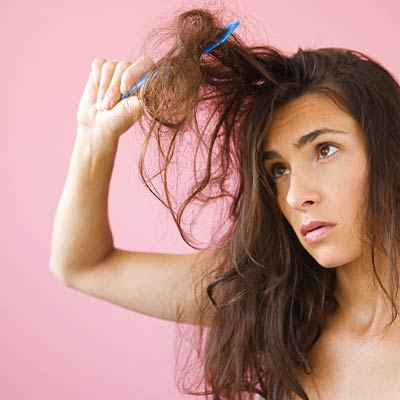
Whether you've got long locks or a trendy pixie, you probably have your own unique hair challenges—maybe it's a weird cowlick or unruly curls. In any case, separating hair fallacies from facts will help you concentrate on things that will actually help your hair grow healthier and look better. Here, myths about your hair, and how you can use the truth to your (beautiful) benefit.
Cutting your hair frequently makes it grow faster
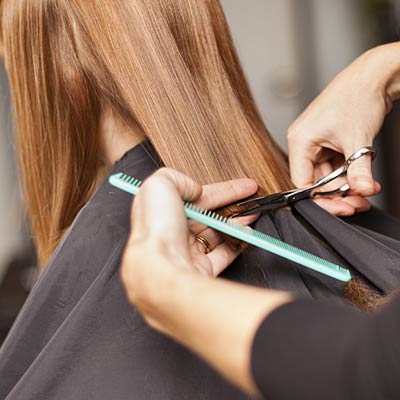
"Trimming your hair doesn't affect growth," says Joshua Zeichner, MD, director of cosmetic and clinical research in dermatology at Mount Sinai Hospital in New York City. "That happens at the scalp." But there's a reason experts suggest trimming your hair every six to eight weeks: "Frayed ends makehair look thinner and cause breakage, so when you cut them off, your hair appears fuller," says Melissa Piliang, MD, dermatologist and hair specialist at the Cleveland Clinic.
If you pluck one gray hair, two will grow back in its place
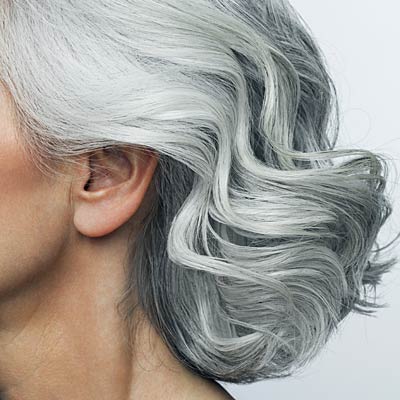
This one only seems true because one gray usually means more grays. "This myth probably started because people plucked one gray hair, then noticed more afterwards," says Dr. Piliang. Sorry to be the bearers of bad news, but more silver strands would have surfaced no matter what—you can't blame the plucking itself.
Still, that's not a license to launch a full-on plucking war on your grays. "Your hair will become weaker if it's plucked too much over time, and it'll eventually stop growing back," warns Dr. Piliang. "That's not a big deal if you're plucking here and there, but it'll add up if you start going gray all over." Time to celebrate your silvers or book an appointment with a colorist
Still, that's not a license to launch a full-on plucking war on your grays. "Your hair will become weaker if it's plucked too much over time, and it'll eventually stop growing back," warns Dr. Piliang. "That's not a big deal if you're plucking here and there, but it'll add up if you start going gray all over." Time to celebrate your silvers or book an appointment with a colorist
Shampooing makes your hair shed
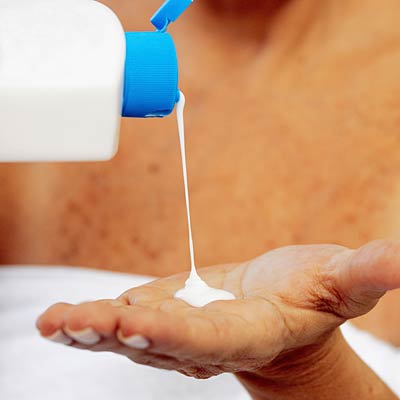
Don't blame the shower: If yourhair is going to fall out, it will simply fall out somewhere else, albeit somewhere less noticeable (thanks, clogged drain). "This is the biggest myth I hear," says Dr. Piliang. "People often lose hair in the shower, so they associate shampooing with shedding." Problem is, if you cut back on washing in an effort to spare your hair, you can actually make the problem worse. "Oil buildup can cause inflammation, which stunts hair growth."
Address the real problem: "Stress is often the culprit behind shedding—divorce, surgery, a death in the family can make it more severe," says Dr. Piliang. Try these eightnatural stress relievers, and add a few drops of essential oils, like lavender, tea tree oil, and rosemary, to your shampoo; they may stimulate hair growth, according to a Journal of Cosmetic Dermatologyreview.
Address the real problem: "Stress is often the culprit behind shedding—divorce, surgery, a death in the family can make it more severe," says Dr. Piliang. Try these eightnatural stress relievers, and add a few drops of essential oils, like lavender, tea tree oil, and rosemary, to your shampoo; they may stimulate hair growth, according to a Journal of Cosmetic Dermatologyreview.
The more you brush your hair, the healthier it will be
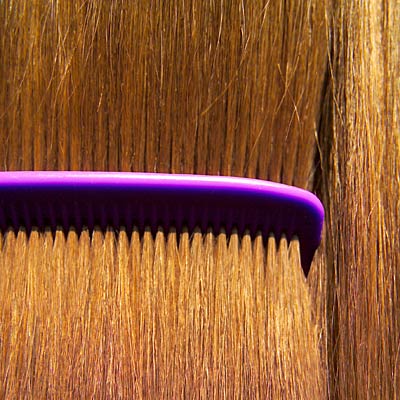
If you've ever groaned at the idea of running a brush through your hair 100 times a day, you'll like this one: there's no value in brushing your hair more than you already do. In fact, excessive brushing may do more harm than good. "Over-brushing can damage your hair's cuticle," says Dr. Piliang. (That's your hair's outer, protective layer.) Brush your hair when it's knotty, but leave it alone otherwise.
Color-treated hair is unhealthy
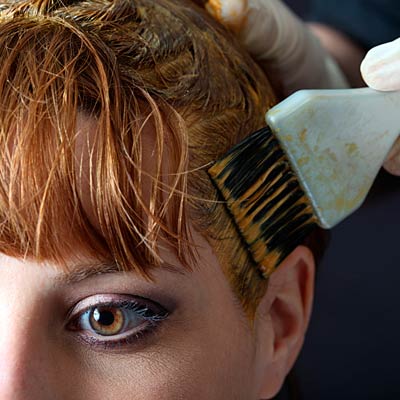
Bleaching is indeed one of the worst things you can do to your hair, but not all types of color treatments should have a bad rep. "Removing color from the hair makes each strand thinner and more prone to breakage," says Dr. Piliang. But adding color actually plumps up your strands, making your locks look thicker. "I tell my patients it's okay to color their hair, as long as they're going darker."
You can't dye your hair when you're pregnant
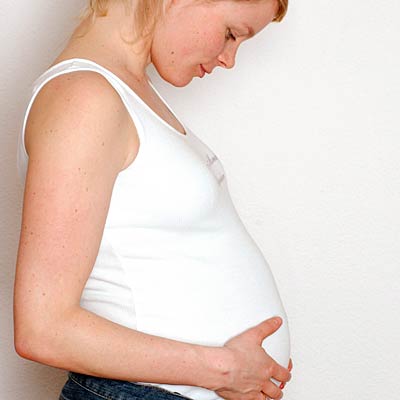
"The main concern with dyeing your hair during pregnancy is the risk associated with inhaling ammonia, not the risk of it being absorbed into your scalp," says Carrie Ann Terrell, MD, an OB-GYN and professor at the University of Minnesota. "But the levels of ammonia are so low that it's not a problem, especially if you go to a salon, which will have industrial strength ventilation." Still, some women prefer the natural route. Henna is a plant-derived, ammonia-free dye, making it a favorite among pregnant women.
Using the right products will make your hair thicker
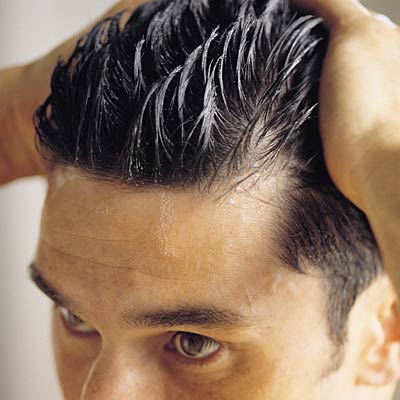
Most people think healthy-looking hair is all about external factors like the weather or the products you use. But what you eat affects your hair more than you think. "It takes your body a lot of energy to grow hair," says Dr. Piliang. "It needs nutrients." That means if you're on a restrictive diet, your body won't be able to dedicate energy to your hair, since it'll be too busy worrying about your essential organs. Make sure you're getting enough carbs, protein, and healthy fats, and pay extra attention to zinc, iron, and vitamin D. "They're crucial vitamins for hair growth, and a lot of women are deficient," says Dr. Piliang. Talk to your doctor about a supplement if your levels are low—especially if you don't eat red meat (which is loaded with iron).
Switching shampoos is good for your hair

"It's fine to switch shampoos, if you like different effects (one is anti-dandruff, one is volumizing, and so on), but it's perfectly fine to use the same shampoo every time you wash," says Dr. Piliang. As for thatmy hair looks so great with this new shampoo feeling? You're probably just liking the novelty: Shampoos do have different effects, says Dr. Piliang, but it's not necessary to switch unless you want something new.
Dandruff signifies a dry scalp
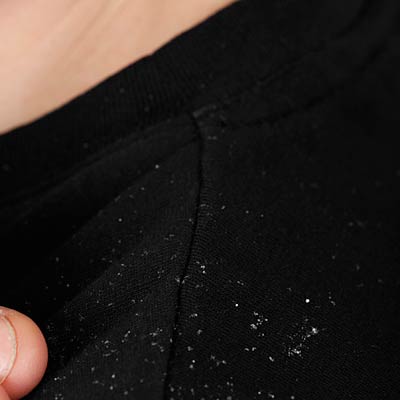
We're used to equating flakes with dryness, so it's an easy mistake to make, but it's an oily scalp that usually goes hand in hand with dandruff. "Dandruff is caused by a type of yeast that tends to overgrow in an oily environment," says Dr. Piliang. "Dandruff is your body's reaction to the yeast." That's a problem if you cut down on washing in an attempt to diminish dandruff: use an anti-dandruff shampoo, but don't scale back your suds sessions.
Sudsy shampoos clean your hair better
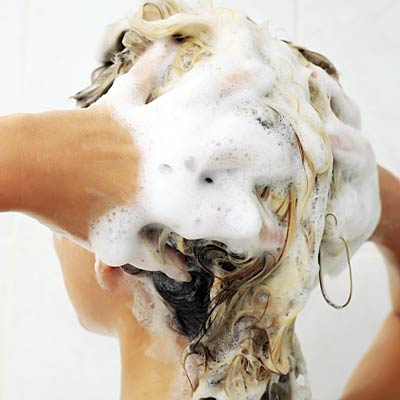
Shampoos don't necessarily need to lather to get the job done. "We're just used to associating a lather with cleanliness," says Dr. Piliang. But sulfates, the foaming agent added to many shampoos, can fade your color if you dye your hair. What's more, there's some debate about possible harmful effects. The American Cancer Society has deemed sulfates safe, but some lab tests suggest sulfates might pose a cancer risk, explains Mitchell Kline, MD, assistant clinical professor at the Weill Cornell Medical College.
If you prefer to play it safe (but still like that sudsy sensation), try a sulfate-free shampoo that has glycerin. "Glycerin creates the soapy lather a lot of people like, with no known risks," says Dr. Kline.
If you prefer to play it safe (but still like that sudsy sensation), try a sulfate-free shampoo that has glycerin. "Glycerin creates the soapy lather a lot of people like, with no known risks," says Dr. Kline.
Air-drying is healthier than blow-drying
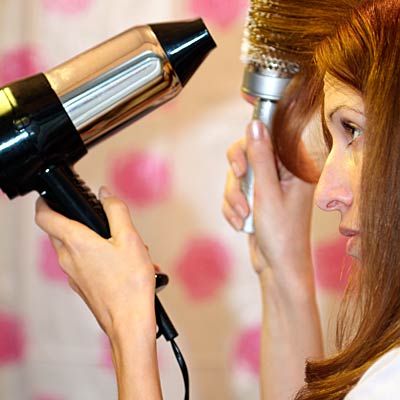
Yes, you should spare your hair the blast of hot air, but sometimes you just need it to be dry in 15 minutes. But what if we told you that air-drying isn't all it's cracked up to be? An Annals of Dermatology studycomparing blow-dried hair to naturally-dried hair found that blow-drying causes more damage to the hair's surface (as expected), but air-drying can create damage deeper within strands.
Researchers say that the interior of the hair swells when exposed to water for extended periods of time, possibly creating more damage than heat styling. (Yes, our minds were blown, too.) Your best bet, according to this study, is to use the lowest heat setting on your dryer (or hold it at least six inches away from your hair), making sure to move the dryer continuously, so you don't concentrate heat on any one spot for too long.
Oils are a no-go if your hair is greasy
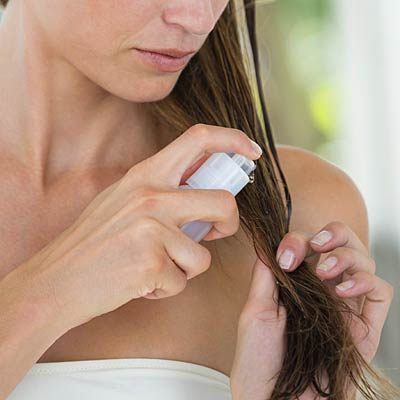
Only if you apply oil to your scalp: "Oils applied to the ends of the hair will add shine and luster," says Dr. Piliang. Even better: Unlike products that sit on the hair's surface creating the illusion of healthy hair, some oils have the ability to penetrate the hair's cuticle and actually make it healthier. Coconut oil was shown to protect against bleach, heat, and UV damage in a Journal of Cosmetic Science study; and argan oil was shown to protect against hair lightening-induced protein loss in aJournal of Cosmetics, Dermatological Sciences and Applications study. Mix 20 drops of pure argan oil with 3.5 fl oz. conditioner (about the size of a bottle you'd carry-on a plane) for the benefits without the grease, says Robson Miranda da Gama, professor of cosmetology at Santo Amaro University in Brazil, and author of the argan oil study. He suggests this mixture for all hair types.
You should wash your hair every other day
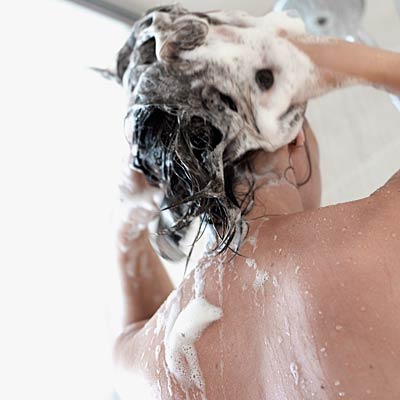
First you heard that you should wash your hair every day, then you started hearing that you should suds up every other day. Throw all the hair-washing rules out the window, and actually pay attention to the look and feel of your hair. Everyone's hair is different. If your hair is oily at the roots, wash it. If not, skip washing until you start feeling greasy. People with dry hair may want to let their scalp become slightly oily to ensure they're not over-washing it, says Dr. Zeichner.
Men inherit baldness from their mother's side of the family
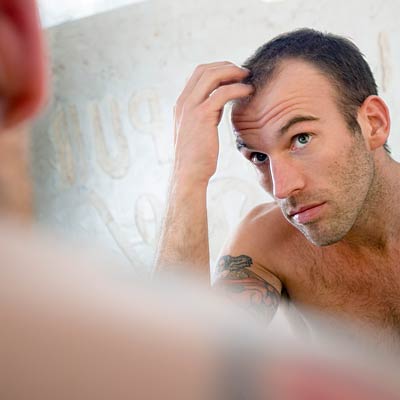
Here's a little biology 101: If you're a man, your mother gave you an "X" chromosome and your father gave you a "Y." (Women receive two Xs.) "Many people think male pattern baldness is an X-linked trait, passed down from the mother's side," says Luis Garza, MD, assistant professor of dermatology at Johns Hopkins School of Medicine, who studies balding. But you can't blame mom for this one: "We suspect multiple genes, from both mom and dad, contribute to baldness," Dr. Garza says.
Wearing hats can cause hair loss

"The idea is that hats cut off circulation to the scalp, causing hair loss," says Dr. Zeichner. "But it's just an old wives' tale." Male pattern baldness is caused by genetics, and is turned on by things like high testosterone and stress, explains Dr. Garza. "People probably just noticed hair in their hats and made the false connection," he adds. That doesn't mean you'll need to hide under your hat if you see the first signs of balding: Dr. Garza says a minoxidil (brand name: Rogaine) regimen works preventively, not just after-the-fact. (It can be used by both men and women.) There are also other treatments for male pattern baldness.
You should towel-dry your hair
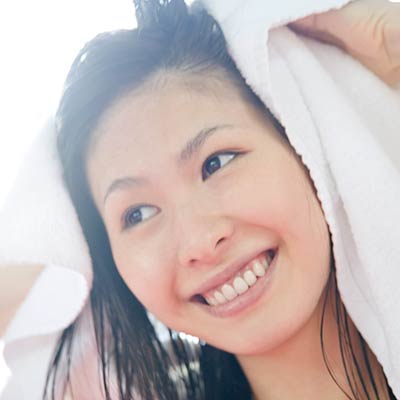
If you're like most people, you exit the shower, immediately reach for a towel, and start rubbing your hair vigorously. Don't. "Towel drying is rough on your hair, and can promote breakage," says Dr. Zeichner. Instead, gently squeeze your hair with a towel, and then comb it with a wide-toothed comb to remove excess water.
21 Reasons Why You're Losing Your Hair
http://www.health.com/health/gallery/0,,20727114,00.html?xid=Time-stronger-nails-092914
Why is my hair falling out?
by Amanda Gardner

It's true that men are more likely to lose their hair than women, mostly due to male pattern baldness (more on that later).
But thinning hair and hair loss are also common in women, and no less demoralizing. Reasons can range from the simple and temporary—a vitamin deficiency—to the more complex, like an underlying health condition.
But thinning hair and hair loss are also common in women, and no less demoralizing. Reasons can range from the simple and temporary—a vitamin deficiency—to the more complex, like an underlying health condition.
In many cases, there are ways to treat both male and female hair loss. It all depends on the cause. Here are some common and not-so-common reasons why you might be seeing less hair on your head.
Physical stress

Any kind of physical trauma—surgery, a car accident, or a severe illness, even the flu—can cause temporary hair loss. This can trigger a type of hair loss called telogen effluvium. Hair has a programmed life cycle: a growth phase, rest phase and shedding phase. “When you have a really stressful event, it can shock the hair cycle, (pushing) more hair into the shedding phase,” explains Marc Glashofer, MD, a dermatologist in New York City. Hair loss often becomes noticeable three-to-six months after the trauma.
What to do: The good news is that hair will start growing back as your body recovers.
What to do: The good news is that hair will start growing back as your body recovers.
Pregnancy
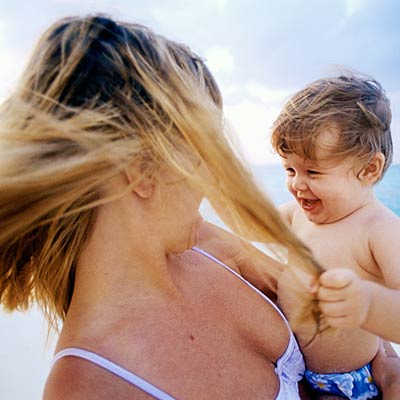
Pregnancy is one example of the type of physical stress that can cause hair loss (that and hormones). Pregnancy-related hair loss is seen more commonly after your baby has been delivered rather than actually during pregnancy. “Giving birth is pretty traumatic,” says Dr. Glashofer.
What to do: If you do experience hair loss, rest assured that your hair will grow back in a couple of months. “It’s a normal thing and it will work its way out,” Dr. Glashofer says.
What to do: If you do experience hair loss, rest assured that your hair will grow back in a couple of months. “It’s a normal thing and it will work its way out,” Dr. Glashofer says.
Too much vitamin A
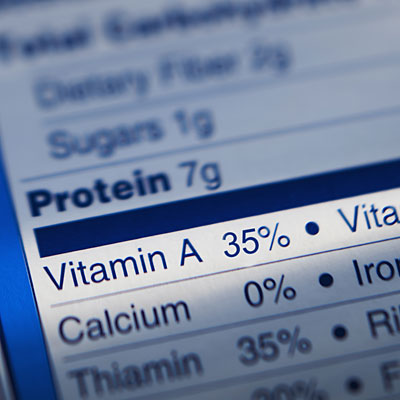
Overdoing vitamin A-containing supplements or medications can trigger hair loss, according to the American Academy of Dermatology. The Daily Value for vitamin A is 5,000 International Units (IU) per day for adults and kids over age 4; supplements can contain 2,500 to 10,000 IU.
What to do: This is a reversible cause of hair loss and once the excess vitamin A is halted, hair should grow normally.
What to do: This is a reversible cause of hair loss and once the excess vitamin A is halted, hair should grow normally.
Lack of protein
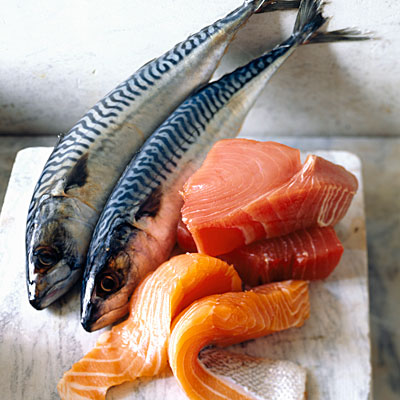
If you don't get enough protein in your diet, your body may ration protein by shutting down hair growth, according to the American Academy of Dermatology. This can happen about two to three months after a drop in protein intake, they say.
What to do: There are many great sources of protein, including fish, meat, and eggs. If you don't eat meat or animal products, here are the 14 Best Vegan and Vegetarian Protein Sources.
What to do: There are many great sources of protein, including fish, meat, and eggs. If you don't eat meat or animal products, here are the 14 Best Vegan and Vegetarian Protein Sources.
Male pattern baldness
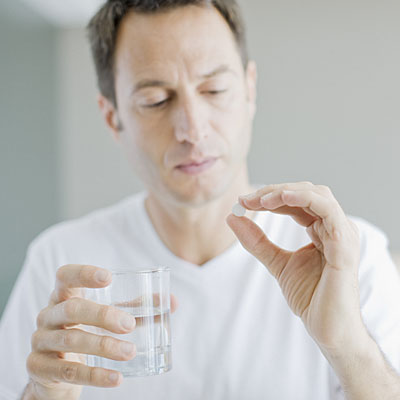
About two out of three men experience hair loss by age 60, and most of the time it's due to male pattern baldness. This type of hair loss, caused by a combo of genes and male sex hormones, usually follows a classic pattern in which the hair recedes at the temples, leaving an M-shaped hairline.
What to do: There are topical creams like minoxidil (Rogaine) and oral medications such as finasteride (Propecia) that can halt hair loss or even cause some to grow; surgery to transplant or graft hair is also an option.
What to do: There are topical creams like minoxidil (Rogaine) and oral medications such as finasteride (Propecia) that can halt hair loss or even cause some to grow; surgery to transplant or graft hair is also an option.
Heredity
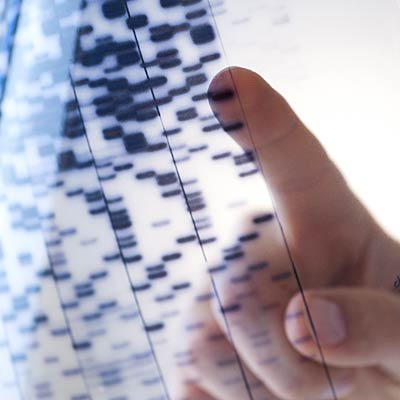
Female-pattern hair loss, called androgenic or androgenetic alopecia, is basically the female version of male pattern baldness. “If you come from a family where women started to have hair loss at a certain age, then you might be more prone to it,” says Dr. Glashofer. Unlike men, women don't tend to have a receding hairline, instead their part may widen and they may have noticeable thinning of hair.
What to do: Like men, women may benefit from minoxidil (Rogaine) to help grow hair, or at least, maintain the hair you have, Dr. Glashofer says. Rogaine is available over-the-counter and is approved for women with this type of hair loss.
Female hormones
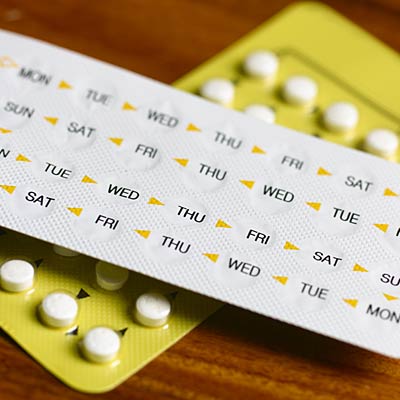
Just as pregnancy hormone changes can cause hair loss, so can switching or going off birth-control pills. This can also cause telogen effluvium, and it may be more likely if you have a family history of hair loss. The change in the hormonal balance that occurs at menopause may also have the same result. “The androgen (male hormone) receptors on the scalp becoming activated,” explains Mark Hammonds, MD, a dermatologist with Scott & White Clinic in Round Rock, Texas. “The hair follicles will miniaturize and then you start to lose more hair.”
What to do: If a new Rx is a problem, switch back or talk to your doctor about other birth control types. Stopping oral contraceptives can also sometimes cause hair loss, but this is temporary, says Dr. Hammonds. Don't make your problem worse with hair-damaging beauty regimens.
What to do: If a new Rx is a problem, switch back or talk to your doctor about other birth control types. Stopping oral contraceptives can also sometimes cause hair loss, but this is temporary, says Dr. Hammonds. Don't make your problem worse with hair-damaging beauty regimens.
Emotional stress

Emotional stress is less likely to cause hair loss than physical stress, but it can happen, for instance, in the case of divorce, after the death of a loved one, or while caring for an aging parent. More often, though, emotional stress won't actually precipitate the hair loss. It will exacerbate a problem that's already there, says Dr. Glashofer.
What to do: As with hair loss due to physical stress, this shedding will eventually abate. While it's not known if reducing stress can help your hair, it can't hurt either. Take steps to combat stress and anxiety, like getting more exercise, tryingtalk therapy, or getting more support if you need it.
What to do: As with hair loss due to physical stress, this shedding will eventually abate. While it's not known if reducing stress can help your hair, it can't hurt either. Take steps to combat stress and anxiety, like getting more exercise, tryingtalk therapy, or getting more support if you need it.
Anemia
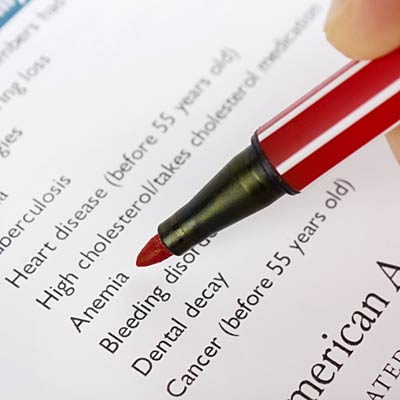
Almost one in 10 women aged 20 through 49 suffers from anemia due to an iron deficiency (the most common type of anemia), which is an easily fixable cause of hair loss. You doctor will have to do a blood test to determine for sure if you have this type of anemia.
What to do: A simple iron supplement should correct the problem. In addition to hair loss, other symptoms of anemia include fatigue, headache, dizziness, pale skin, and cold hands and feet.
What to do: A simple iron supplement should correct the problem. In addition to hair loss, other symptoms of anemia include fatigue, headache, dizziness, pale skin, and cold hands and feet.
Hypothyroidism
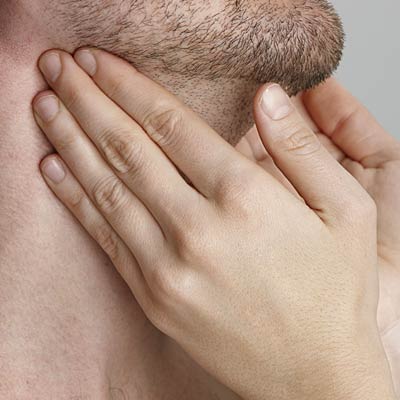
Hypothyroidism is the medical term for having an underactive thyroid gland. This little gland located in your neck produces hormones that are critical to metabolism as well as growth and development and, when it’s not pumping out enough hormones, can contribute to hair loss. Your doctor can do tests to determine the real cause
What to do: Synthetic thyroid medication will take care of the problem. Once your thyroid levels return to normal, so should your hair.
What to do: Synthetic thyroid medication will take care of the problem. Once your thyroid levels return to normal, so should your hair.
Vitamin B deficiency
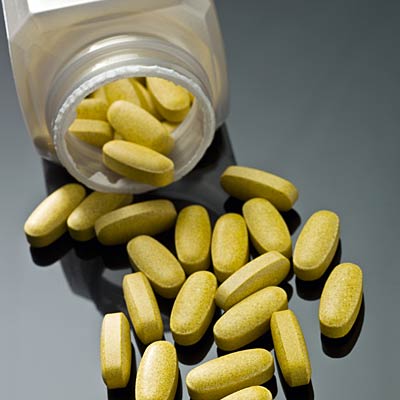
Although relatively uncommon in the U.S., low levels of vitamin B are another correctible cause of hair loss.
What to do: Like anemia, simple supplementation should help the problem. So can dietary changes. Find natural vitamin B in fish, meat, starchy vegetables, and non-citrus fruits. As always, eating a balanced diet plentiful in fruits and vegetables as well as lean protein and “good” fats such as avocado and nuts will be good for your hair and your overall health.
What to do: Like anemia, simple supplementation should help the problem. So can dietary changes. Find natural vitamin B in fish, meat, starchy vegetables, and non-citrus fruits. As always, eating a balanced diet plentiful in fruits and vegetables as well as lean protein and “good” fats such as avocado and nuts will be good for your hair and your overall health.
Autoimmune-related hair loss
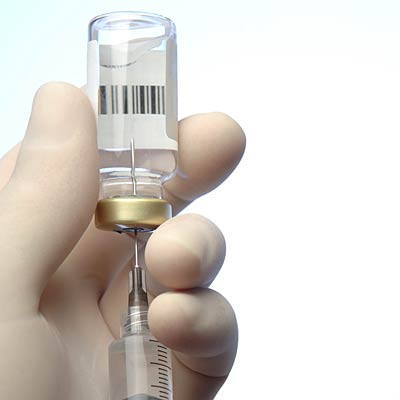
This is also called alopecia areata and basically is a result of an overactive immune system. “The body gets confused,” says Dr. Glashofer. “The immune system sees the hair as foreign and targets it by mistake.”
What to do: Steroid injections are the first line of treatment for alopecia areata, which appears as hair loss in round patches on the head. Other drugs, including Rogaine, may also be used. The course of the condition can be unpredictable, with hair growing back then falling out again.
What to do: Steroid injections are the first line of treatment for alopecia areata, which appears as hair loss in round patches on the head. Other drugs, including Rogaine, may also be used. The course of the condition can be unpredictable, with hair growing back then falling out again.
Lupus

Other autoimmune diseases such aslupus can also cause hair loss. Again it’s a case of mistaken identity: overzealous immune cells attack the hair. Unfortunately, hair loss of this type is “scarring,” meaning the hair will not grow back, says Dr. Hammonds.
What to do: If the hair loss is mild, you might want to try a new hairstyle to camouflage the damage. Short hair, for instance, is stronger than long hair and may hide bald patches better.
What to do: If the hair loss is mild, you might want to try a new hairstyle to camouflage the damage. Short hair, for instance, is stronger than long hair and may hide bald patches better.
Dramatic weight loss
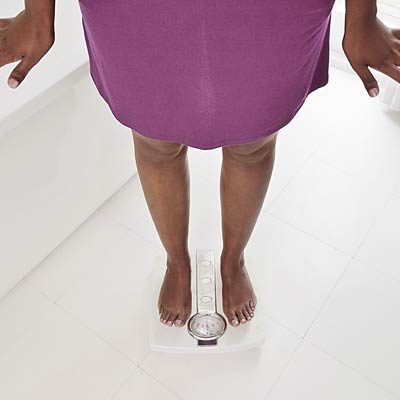
Sudden weight loss is a form of physical trauma that can result in thinning hair. This could happen even if the weight loss is ultimately good for you. It’s possible that the weight loss itself is stressing your body or that not eating right can result in vitamin or mineral deficiencies. Loss of hair along with noticeable weight loss may also be a sign of an eating disorder such as anorexia or bulimia.
What to do: "Sudden weight loss seems to shock the system and you’ll have a six-month period of hair loss and then it corrects itself,” says Dr. Hammonds.
What to do: "Sudden weight loss seems to shock the system and you’ll have a six-month period of hair loss and then it corrects itself,” says Dr. Hammonds.
Chemotherapy
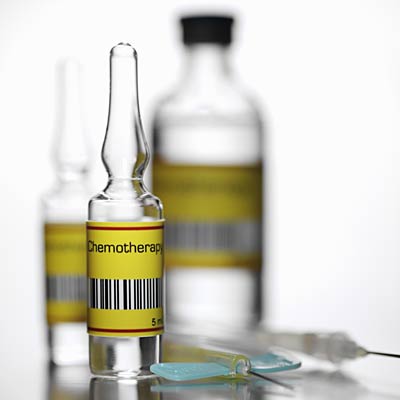
Some of the drugs used to beat back cancer unfortunately can also cause your hair to fall out. “Chemotherapy is like a nuclear bomb,” says Dr. Glashofer. “It destroys rapidly dividing cells. That means cancer cells, but also rapidly dividing cells like hair.”
What to do: Once chemotherapy is stopped, your hair will grow back although often it will come back with a different texture (perhaps curly when before it was straight) or a different color. Researchers are working on more targeted drugs to treat cancer, ones that would bypass this and other side effects. In the meantime, Here's How to Deal With Thinning Hair During Chemo.
What to do: Once chemotherapy is stopped, your hair will grow back although often it will come back with a different texture (perhaps curly when before it was straight) or a different color. Researchers are working on more targeted drugs to treat cancer, ones that would bypass this and other side effects. In the meantime, Here's How to Deal With Thinning Hair During Chemo.
Polycystic ovary syndrome
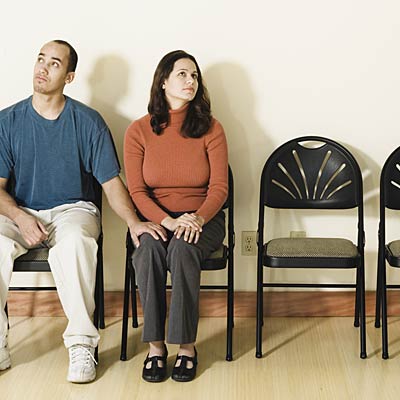
Polycystic ovary syndrome (PCOS) is another imbalance in male and female sex hormones. An excess of androgens can lead to ovarian cysts, weight gain, a higher risk of diabetes, changes in your menstrual period, infertility, as well as hair thinning. Because male hormones are overrepresented in PCOS, women may also experience more hair on the face and body.
What to do: Treating PCOS can correct the hormone imbalance and help reverse some of these changes. Treatments include diet, exercise, and potentially birth control pills, as well as specific treatment to address infertility or diabetes risk.
What to do: Treating PCOS can correct the hormone imbalance and help reverse some of these changes. Treatments include diet, exercise, and potentially birth control pills, as well as specific treatment to address infertility or diabetes risk.
Antidepressants, blood thinners, and more

Certain other classes of medication may also promote hair loss. More common among them are certain blood thinners and the blood-pressure drugs known as beta-blockers. Other drugs that might cause hair loss include methotrexate (used to treat rheumatic conditionsand some skin conditions), lithium (for bipolar disorder), nonsteroidal anti-inflammatory drugs (NSAIDs) including ibuprofen, and possiblyantidepressants.
What to do: If your doctor determines that one or more of your medications is causing hair loss, talk with him or her about either lowering the dose or switching to another medicine.
What to do: If your doctor determines that one or more of your medications is causing hair loss, talk with him or her about either lowering the dose or switching to another medicine.
Overstyling
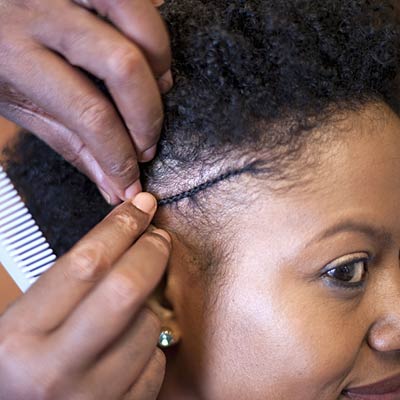
Vigorous styling and hair treatments over the years can cause your hair to fall out. Examples of extreme styling include tight braids, hair weaves or corn rows as well as chemical relaxers to straighten your hair, hot-oil treatments or any kind of harsh chemical or high heat. Because these practices can actually affect the hair root, your hair might not grow back.
What to do: In addition to avoiding these styles and treatments, the American Academy of Dermatology recommends using conditioner after every shampoo, letting your hair air dry, limiting the amount of time the curling iron comes in contact with your hair and using heat-driven products no more than once a week.
What to do: In addition to avoiding these styles and treatments, the American Academy of Dermatology recommends using conditioner after every shampoo, letting your hair air dry, limiting the amount of time the curling iron comes in contact with your hair and using heat-driven products no more than once a week.
Trichotillomania
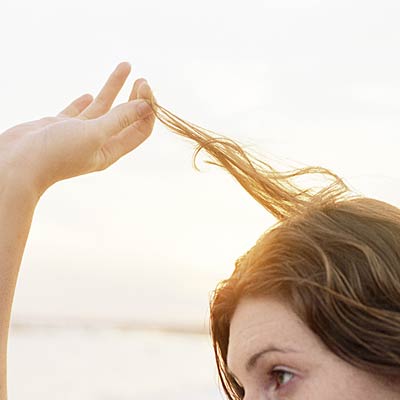
Trichotillomania, classified as an “impulse control disorder,” causes people to compulsively pull their hair out. “It’s sort of like a tic, the person is constantly playing and pulling their hair,” says Dr. Glashofer says. Unfortunately, this constant playing and pulling can actually strip your head of its natural protection: hair. Trichotillomania often begins before the age of 17 and is four times as common in women as in men.
What to do: Some antidepressants may be effective, but behavioral modification therapy is another option.
What to do: Some antidepressants may be effective, but behavioral modification therapy is another option.
Aging
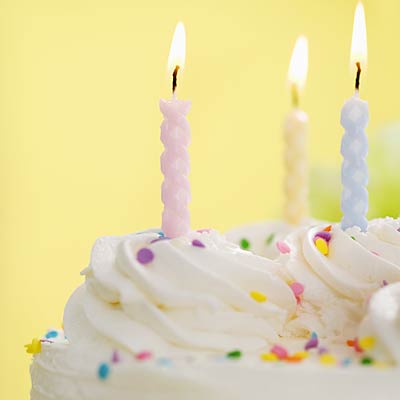
It’s not uncommon to see hair loss or thinning of the hair in women as they enter their 50s and 60s, says Dr. Glashofer. Experts aren’t sure why this happens.
What to do: Experts don't recommend that this condition be treated, says Dr. Hammonds. That leaves women with cosmetic approaches such as scarves, wigs and hair styled so as to cover up thin spots. That said, there are also plenty of tricks to prevent hair breakage and ways to keep your hair looking shiny and healthy in your 50s and above.
What to do: Experts don't recommend that this condition be treated, says Dr. Hammonds. That leaves women with cosmetic approaches such as scarves, wigs and hair styled so as to cover up thin spots. That said, there are also plenty of tricks to prevent hair breakage and ways to keep your hair looking shiny and healthy in your 50s and above.
Anabolic steroids
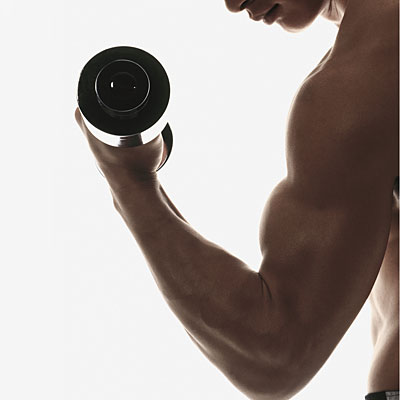
If you take anabolic steroids—the type abused by some athletes to bulk up muscle—you could lose your hair, according to the American Academy of Dermatology. Anabolic steroids can have the same impact on the body as polycystic ovary disease (PCOS), as the mechanism is the same, says Dr. Hammonds.
What to do: This should improve after going off the drug.
What to do: This should improve after going off the drug.
No comments:
Post a Comment